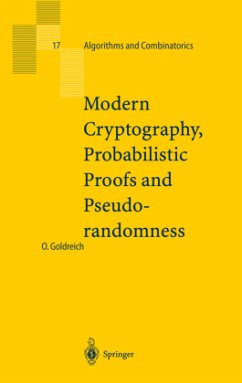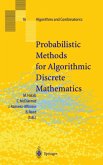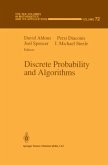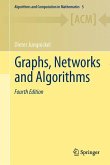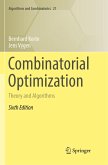You can start by putting the DO NOT DISTURB sign. Cay, in Desert Hearts (1985). The interplay between randomness and computation is one of the most fas cinating scientific phenomena uncovered in the last couple of decades. This interplay is at the heart of modern cryptography and plays a fundamental role in complexity theory at large. Specifically, the interplay of randomness and computation is pivotal to several intriguing notions of probabilistic proof systems and is the focal of the computational approach to randomness. This book provides an introduction to these three, somewhat interwoven domains (i.e., cryptography, proofs and randomness). Modern Cryptography. Whereas classical cryptography was confined to the art of designing and breaking encryption schemes (or "secrecy codes"), Modern Cryptography is concerned with the rigorous analysis of any system which should withstand malicious attempts to abuse it. We emphasize two aspects of the transition from classical to modern cryptography: ( 1) the wide ning of scope from one specific task to an utmost wide general class of tasks; and (2) the move from an engineering-art which strives on ad-hoc tricks to a scientific discipline based on rigorous approaches and techniques.
From the reviews: "This book is intended for a reader with some knowledge of the theory of computing. It is divided into three chapters, each a survey of one of the topics mentioned in the title. The chapters may be read independently, and are somewhat different in nature. ...The book ends with four appendices. The first summarises the probability theory, complexity theory and cryptography that is used in the body of the book. The second gives examples of randomisation in algorithmic problems, complexity theory and distributed computing. The third contains two proofs, not to be found in the literature, of well-known results. The last appendix lists other surveys by the author." (Simon R. Blackburn, Mathematical Reviews) "Modern cryptography, probabilistic proofs and pseudorandomness are three areas in theoretical computer science that demonstrate the interplay between randomness and computations. ... This book is informative and rich in content. ... the most appealing feature of this book is that it leans toward the intuition and historical motivations around these topics. ... it is an excellent resource for students and researchers ... . this book will probably give you a good collection of background motivations and nice discussions as well." (Andrew C. Lee, SIGACT News, Vol. 34 (4), 2003)

